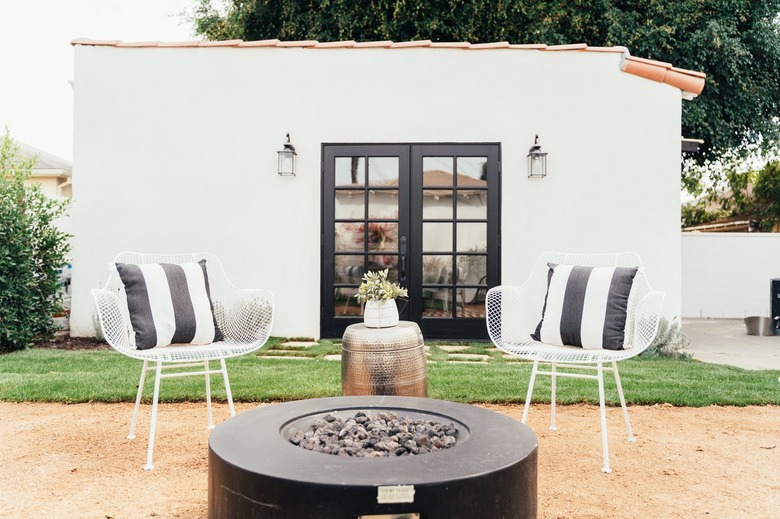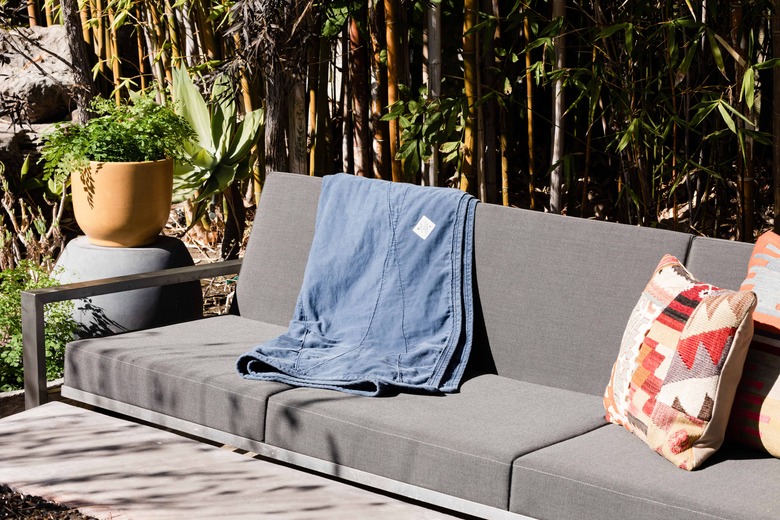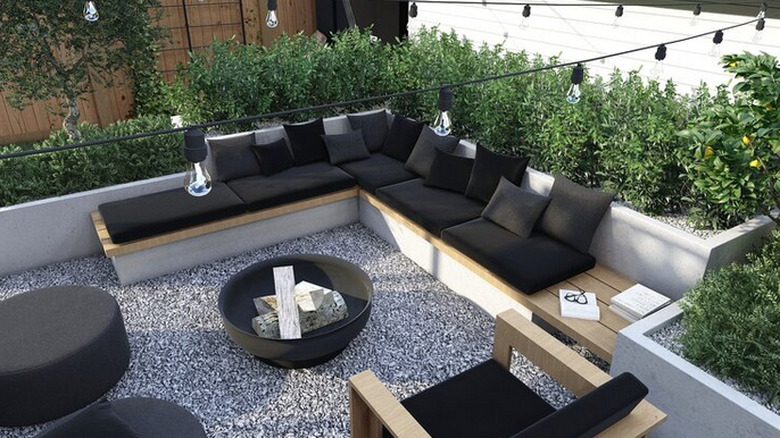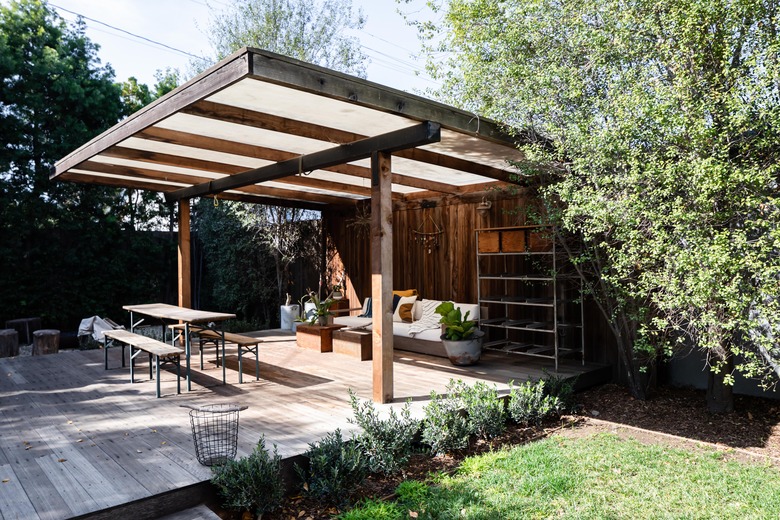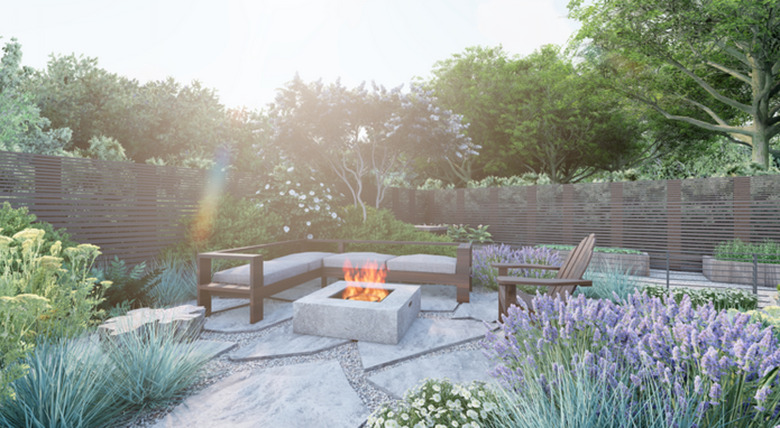6 Ways To Extend The Lease On Outdoor Living Into The Fall And Beyond
It's about to be our first pandemic winter — and as of now, expert advice still holds: To stay safe, wear masks, stay six feet apart, and, in particular, stick to the outdoors. Which makes extending the lease on your outdoor living areas, into fall and beyond, all the more important.
Kevin Lenhart, design director of the online landscape design service Yardzen, has a few ideas to share. "We cannot make 20 degree changes — even 10 degree changes — to your environment," he says. But there's a lot you can do to make the great outdoors more comfortable, for longer — which means a lot right now.
Turn Up the Heat
Turn Up the Heat
First things first — find your heat source. One easy solution is a fire pit, which comes in a variety of price points and styles. Some of the most affordable — wood-burning fire pits — are not recommended. "In some applications, they can be fine — but not on a deck or near dry brush," says Lenhart. "A lot of cities have ordinances against them."
Gas-powered fire pits are typically safer. On the high end, you can dig a trench and hardline the fire pit to the gas line in your home. More affordable styles are connected to propane, which you'll need to disguise — which is pretty easy. "Container plants work miracles," says Lenhart.
Another option? Space heaters. Restaurant-style heaters are relatively affordable, says Lenhart, but they do come with a footprint — physically and visually. "They're not my optimal choice," he says. Infrared heaters, which are slightly more expensive, can be attached to a roof or pergola. "From a design perspective, they are my preference because of the minimal amount of space they require," he says.
Embrace Coziness
Embrace Coziness
There's also an analog answer, which is to use a blanket. "This is a great tip that I've seen used at weddings in colder climates," says Lenhart. "It's a very effective, very low-cost strategy." In dryer climates, you can store blankets outdoors in a basket, but if it's humid, use a bench or other outdoor storage that closes, to mitigate mildew and mold.
Turn on the Lights
Turn on the Lights
Days are shorter in the winter, and proper lighting helps you stay outside longer. Lenhart recommends inexpensive string lights, to start. "Landscape lighting can get expensive pretty quickly," he says.
He has two tips for when you go to install. The first? Be sparing. "String lights look great at night — and terrible during the day. You don't want power lines running across your yard all day long," he says.
And two: Be sure to use the lights where they count. "Limit them to the space where you're actually spending time," Lenhart advises. So, perhaps not the pathway to the outdoor table, just the table itself.
Block the Wind
Block the Wind
"Wind obviously makes a space cooler," says Lenhart. "In summer you want that." But in the winter, he says, you want to create a windbreak — a dense barrier of plants along the north-facing wall of your house, to block cool winds blowing in from the north. If you don't have a proper area to plant, you can use evergreen plants in containers.
Another option, if you have a pergola or overhead covering, are windscreens. "They are very effective at blocking wind, but they can become a wall and enclose the space that you're in," says Lenhart. If you're craving a large open outdoor space, which many of us do, windscreens work against that. "But small is not a bad thing," he adds. "It can feel cozy."
Let the Sun In
Let the Sun In
"Sunlight is the gift that keeps on giving," says Lenhart. He explains that standard landscape practice is to plant deciduous trees on the south side of your home, so that the trees block the sun in the summer, and when the leaves fall off they let the light through to warm the patio in the winter. "If concrete is exposed to sunlight it absorbs that light and re-radiates it as heat," says Lenhart. "It's a go-to green building strategy you can take advantage of with outdoor space design." Keep in mind, though, that the opposite is true — concrete in the shade can make a space much cooler.
Dress for the Occasion
Dress for the Occasion
A low-tech solution for all your outdoor living needs? Put on your puffy coat. "It's okay to be cold," says Lenhart. "It's okay to have to bundle up. You're getting to experience a different flavor of the world." Embrace the season for what it is — and focus on the real goal, connecting safely with your community, outdoors.
